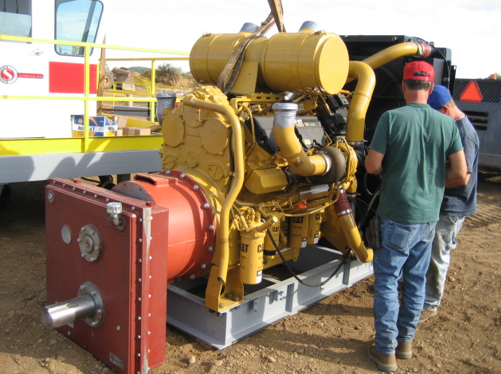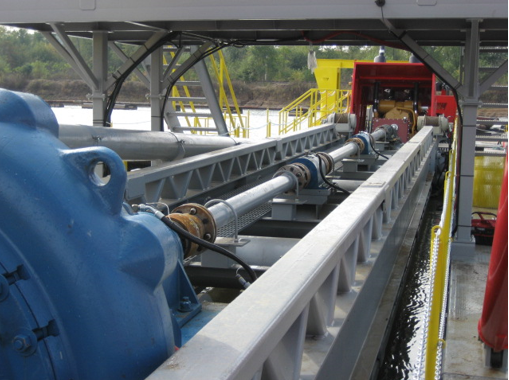-
Understanding Applications on the Front End
- Gearbox Attached to Engine
- Gearbox on Dredge
When Rj Link’s engineering team designs a gearbox, the design is based off of the information that is given. If a customer does not understand their own system, then it will translate back into the gearbox design. Rj Link has been seeing a trend from companies that are lacking product and application experts. In some cases there appears to be a mismatch of knowledge as more people are reaching retirement age, and companies are bringing on new engineers. The need for people that are familiar with your equipment, the environment, the application and how something has to survive and run keeps growing.
When mounting a gearbox, it is important to measure everything that goes into it to achieve the desired results. When Rj Link’s engineering team designs gearboxes, it all starts with what’s driving it. Below are some of the considerations:
- How much horsepower is coming into the gearbox?
- Type of motor, such as direct drive, electrical, diesel engine, gasoline engine, etc.
- Is there a pressure system controlled with sensors driving the gearbox.
Based on some of the conditions that are present, it’s important to specify the proper size gearbox to handle the unknown torque and power spikes. If the worst case of the unknown can be defined, then the gearbox will be able to handle everything else.
Below are some other questions that need to be answered to help determine the size of the gearbox:
- Interface details of the type of shaft that will drive the gearbox.
- Direct drive?
- Is it coupled?
- Bell housing?
- Type of C mounting or drive plate?
In a recent application, Rj Link worked with a company that had a gearbox in service from another source. The gearbox had been designed based off of a certain duty cycle, the anticipated extreme temperatures, the connection from input to output side, and the type of pressure that was expected to be going into the system. The manufacturer also built the gearbox to a certain level of safety. As the gearbox went through some extended life testing, the company started to see some variances with the gearboxes overheating. The concern was that the gearboxes would not be able to handle the load and the speed for the duration that was needed. The company contacted Rj Link and sent in a gearbox for evaluation. After looking at the parts that were in operation and doing a proper inspection, Rj Link’s engineering team offered a solution that has not only met, but exceeded, the customer’s expectations.
Lacking knowledge about an application on the front end, can result in having a product trying to do something that it was never intended to do. One way to fix that problem is to find people that have hands on experience. Rj Link’s engineering team continues to see an increase in requests from companies that have a gearbox designed incorrectly for their system, reach out to them for their expertise and knowledge to offer a more suitable solution.


 1-815-874-8110
1-815-874-8110






